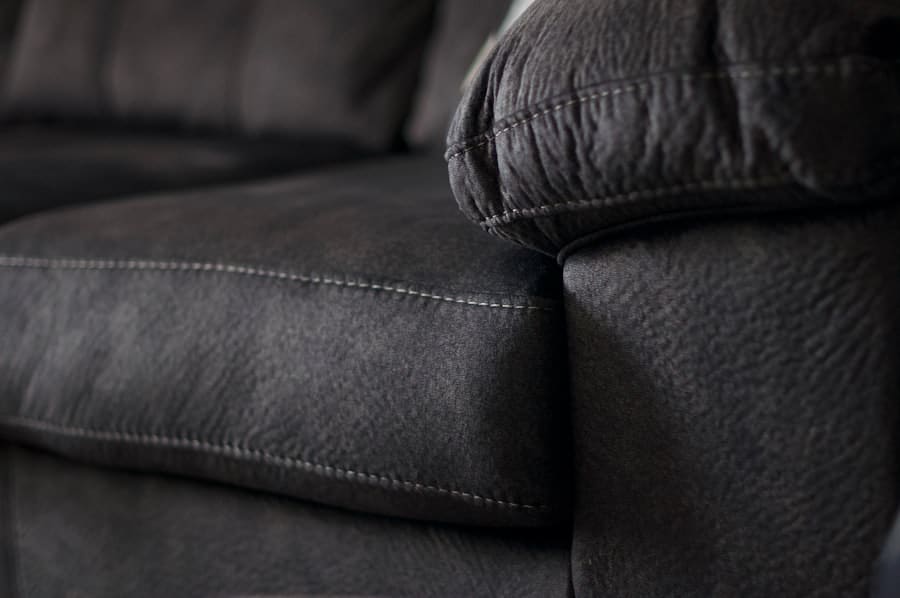The advent of the Internet of Things (IoT) has revolutionized various sectors, and the furniture industry is no exception. Smart furniture equipped with IoT sensors represents a significant leap forward in how we interact with our living and working spaces. This innovative approach integrates technology into everyday furniture, allowing for enhanced functionality, improved user experience, and increased efficiency.
By embedding sensors and connectivity features into items such as chairs, tables, and beds, manufacturers are creating environments that respond to the needs of users in real-time. Smart furniture can monitor various parameters, including temperature, humidity, occupancy, and even user behavior. This data can be utilized to optimize comfort levels, enhance productivity, and promote well-being.
For instance, a smart desk can adjust its height based on the user’s posture or remind them to take breaks based on their sitting duration. As urbanization continues to rise and living spaces become more compact, the demand for multifunctional and adaptive furniture solutions is growing. The integration of IoT technology into furniture not only addresses these needs but also paves the way for a more connected and intelligent living experience.
Key Takeaways
- Smart furniture with IoT sensors combines traditional furniture with technology to create a more efficient and convenient living or working environment.
- Advantages of smart furniture with embedded IoT sensors include improved energy efficiency, personalized user experiences, and enhanced safety and security features.
- Potential applications of smart furniture with IoT sensors range from smart lighting and climate control to health monitoring and inventory management.
- Challenges and limitations of smart furniture with IoT sensors include high initial costs, potential security vulnerabilities, and the need for reliable connectivity.
- Artificial intelligence plays a crucial role in smart furniture with IoT sensors by enabling automation, predictive maintenance, and personalized user interactions.
Advantages of Smart Furniture with Embedded IoT Sensors
Personalization and Adaptability
This level of personalization is unprecedented in traditional furniture design, where static features often fail to accommodate individual needs. Smart furniture’s ability to adapt to users’ preferences and habits sets it apart from conventional furniture.
Energy Efficiency and Sustainability
Smart furniture also contributes to energy efficiency and sustainability. IoT-enabled devices can monitor energy consumption and optimize usage based on real-time data. For example, a smart coffee table equipped with sensors can detect when a room is unoccupied and automatically turn off connected devices or adjust lighting levels accordingly. This not only reduces energy waste but also lowers utility costs for consumers.
A Sustainable Future for Furniture
Many manufacturers are now focusing on sustainable materials and production methods, further enhancing the environmental benefits of smart furniture. As the industry continues to evolve, we can expect to see even more innovative solutions that prioritize both user experience and the planet’s well-being.
Potential Applications of Smart Furniture with IoT Sensors

The potential applications of smart furniture with IoT sensors are vast and varied, spanning residential, commercial, and even healthcare settings. In homes, smart furniture can create a seamless integration of technology into daily life. For instance, a dining table could feature built-in wireless charging capabilities for devices or even integrate a display for video calls or recipe instructions while cooking.
In children’s rooms, smart beds can monitor sleep quality and provide insights to parents about their child’s rest patterns. In office environments, smart desks equipped with IoT sensors can track employee productivity and well-being. These desks can adjust their height automatically based on user preferences or remind employees to stand up after prolonged sitting periods.
Furthermore, smart conference tables can facilitate meetings by integrating video conferencing tools and providing real-time data analytics on team performance. In healthcare settings, smart furniture can play a crucial role in patient care; for example, smart hospital beds can monitor vital signs and alert medical staff if any abnormalities are detected.
Challenges and Limitations of Smart Furniture with IoT Sensors
Despite the numerous advantages of smart furniture with IoT sensors, several challenges and limitations must be addressed for widespread adoption. One significant concern is the complexity of integration with existing home or office systems. Many consumers may find it daunting to set up and manage multiple connected devices, leading to frustration and potential disengagement from the technology.
Additionally, compatibility issues between different brands and platforms can hinder seamless operation. Another challenge lies in the cost associated with smart furniture. While prices are gradually decreasing as technology advances, high initial costs may deter some consumers from investing in these innovative solutions.
Furthermore, there is a risk that the rapid pace of technological advancement could render certain products obsolete within a short period, leading to concerns about long-term value. Manufacturers must strike a balance between incorporating cutting-edge technology and ensuring that their products remain relevant over time.
The Role of Artificial Intelligence in Smart Furniture with IoT Sensors
Artificial Intelligence (AI) plays a pivotal role in enhancing the functionality of smart furniture equipped with IoT sensors. By leveraging machine learning algorithms and data analytics, AI can analyze user behavior patterns and preferences to provide personalized experiences. For instance, a smart chair could learn an individual’s preferred seating position over time and automatically adjust itself for optimal comfort without requiring manual input.
Moreover, AI can facilitate predictive maintenance for smart furniture. By continuously monitoring the performance of embedded sensors and components, AI systems can identify potential issues before they escalate into significant problems. This proactive approach not only extends the lifespan of the furniture but also enhances user satisfaction by minimizing disruptions caused by malfunctioning devices.
The Impact of Smart Furniture with IoT Sensors on Home and Office Environments

The introduction of smart furniture with IoT sensors is transforming both home and office environments in profound ways. In residential settings, these innovations foster a more connected lifestyle where technology seamlessly integrates into daily routines. For example, smart sofas equipped with sensors can adjust their firmness based on user preferences or even provide reminders for physical activity during binge-watching sessions.
This level of interactivity encourages healthier habits while enhancing overall comfort. In office environments, the impact is equally significant. Smart furniture promotes a culture of well-being and productivity by encouraging employees to adopt healthier work habits.
Desks that remind users to stand or take breaks can lead to increased focus and reduced fatigue throughout the workday. Additionally, the data collected from these devices can provide valuable insights into workspace utilization, enabling companies to optimize layouts for better collaboration and efficiency. As organizations increasingly prioritize employee wellness, the role of smart furniture will continue to grow in importance.
Future Trends and Developments in Smart Furniture with IoT Sensors
As technology continues to advance at an unprecedented pace, the future of smart furniture with IoT sensors holds exciting possibilities. One emerging trend is the integration of augmented reality (AR) into furniture design and functionality.
This immersive experience could revolutionize the way consumers shop for furniture by providing a more interactive and informed decision-making process. Another trend is the increasing focus on health monitoring capabilities within smart furniture. As awareness of health issues related to sedentary lifestyles grows, manufacturers are likely to develop more sophisticated solutions that track not only posture but also vital signs such as heart rate or stress levels.
This data could be used to provide personalized recommendations for improving overall well-being. Furthermore, advancements in materials science may lead to the development of self-cleaning or antimicrobial surfaces in smart furniture, enhancing hygiene in both home and office environments.
Ethical and Privacy Considerations for Smart Furniture with IoT Sensors
The proliferation of smart furniture equipped with IoT sensors raises important ethical and privacy considerations that must be addressed as this technology becomes more widespread. One primary concern is data security; as these devices collect sensitive information about users’ habits and preferences, ensuring that this data is protected from unauthorized access is paramount. Manufacturers must implement robust security measures to safeguard user information from potential breaches.
Additionally, there are ethical implications surrounding user consent and data usage. Consumers should be fully informed about what data is being collected, how it will be used, and who will have access to it. Transparency in data practices is essential for building trust between manufacturers and consumers.
Furthermore, as AI systems become more integrated into smart furniture, questions arise regarding algorithmic bias and fairness in decision-making processes. Ensuring that these systems operate equitably will be crucial as they become more prevalent in everyday life. In conclusion, while smart furniture with IoT sensors presents numerous advantages and opportunities for innovation across various sectors, it also brings forth challenges that require careful consideration.
As technology continues to evolve, addressing these challenges will be essential for maximizing the benefits of smart furniture while ensuring ethical standards are upheld in its development and deployment.
If you are interested in the latest technology trends, you may also want to check out How Smartwatches Are Revolutionizing the Workplace. This article discusses the impact of smartwatches on productivity and efficiency in the workplace, similar to how IoT sensors are transforming the functionality of smart furniture. Both articles highlight the ways in which technology is shaping our daily lives and improving our overall experience.
FAQs
What is smart furniture with embedded IoT sensors?
Smart furniture with embedded IoT sensors refers to furniture pieces that are equipped with sensors and connected to the internet, allowing them to collect and exchange data. These sensors can monitor various aspects such as usage patterns, environmental conditions, and user preferences.
How does smart furniture with embedded IoT sensors work?
Smart furniture with embedded IoT sensors work by using sensors to collect data on usage, environmental conditions, and user preferences. This data is then transmitted to a central system or cloud platform where it can be analyzed and used to provide insights, automate functions, and improve user experience.
What are the benefits of smart furniture with embedded IoT sensors?
The benefits of smart furniture with embedded IoT sensors include improved user experience, personalized functionality, energy efficiency, predictive maintenance, and data-driven insights for businesses. These furniture pieces can also contribute to the development of smart homes and smart offices.
What are some examples of smart furniture with embedded IoT sensors?
Examples of smart furniture with embedded IoT sensors include smart desks that adjust height based on user preferences, smart mattresses that monitor sleep patterns, and smart chairs that provide posture feedback. Other examples include smart lighting systems and smart climate control systems integrated into furniture pieces.
What are the potential challenges of smart furniture with embedded IoT sensors?
Potential challenges of smart furniture with embedded IoT sensors include data privacy and security concerns, interoperability issues with other smart devices, and the need for reliable connectivity. Additionally, there may be concerns about the longevity and maintenance of the embedded sensors.

